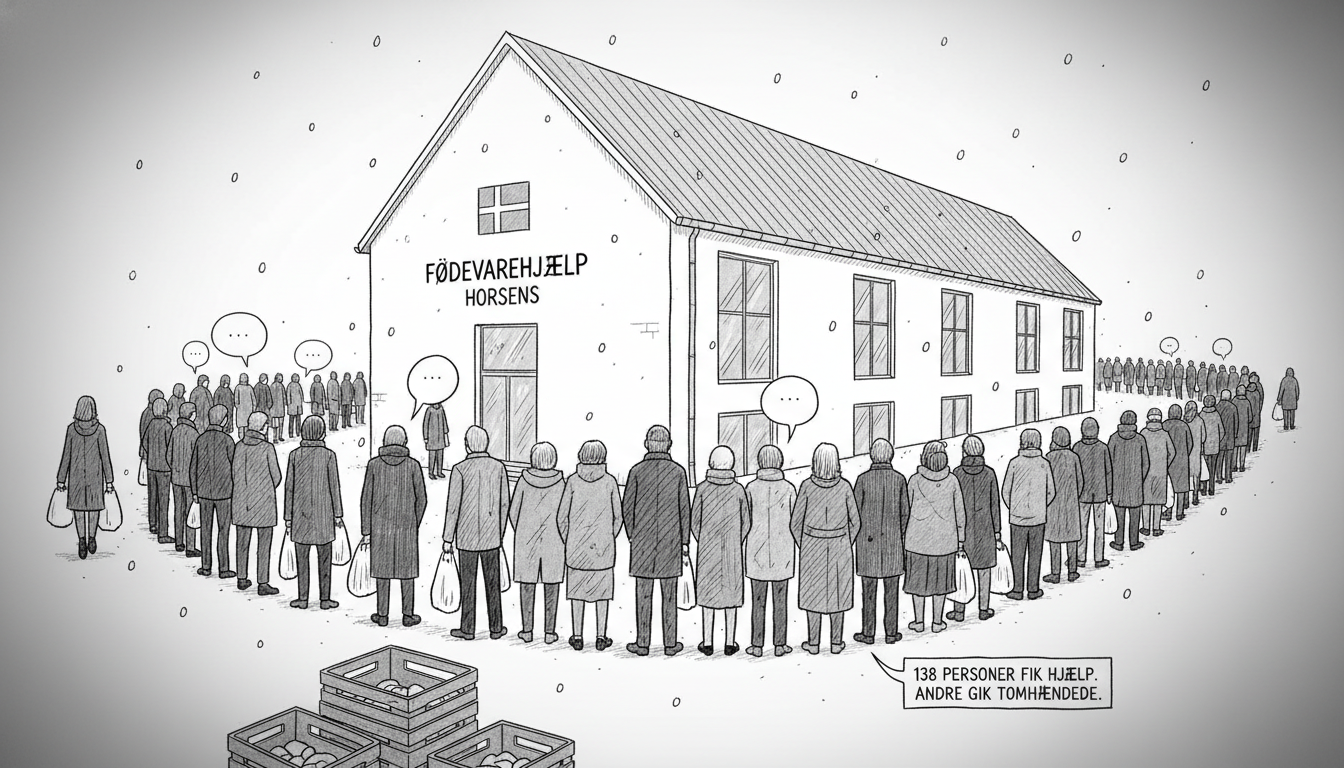Food distribution centers across Denmark report growing lines of people waiting for assistance. The situation highlights deepening economic pressures on households with limited incomes. At one location in Horsens, the queue stretches so far that people cannot see from one end to the other. The line winds across the parking lot and continues far down the road.
On a recent Wednesday morning, people stood patiently in light rain waiting for laminated plastic numbers. These numbers determine who receives food that day. Administrator Kim Laursen distributes the tickets. Many arrive one hour early to secure their spot. Today, only 138 people will receive assistance.
"Sometimes people leave empty-handed, and they get angry," Laursen explained.
Food prices continue to pressure Danish families with lower incomes. Data from retailer Coop shows many consumers now skip fruits and vegetables. This represents a worrying nutritional trend. The food distribution organization Stop Spild Lokalt operates the Horsens location. Similar scenes unfold at other distribution points nationwide.
Denmark typically enjoys high living standards and strong social safety nets. The growing reliance on food assistance signals broader economic challenges. Inflation has hit European countries hard in recent years. Denmark's situation reflects wider continental trends.
Food banks and distribution centers traditionally served small segments of the population. Now they see diverse participants including working families and elderly residents. The lines form early because demand outstrips supply. Organizations struggle to secure enough surplus food for everyone seeking help.
Economic analysts note that while Denmark maintains strong employment, purchasing power has declined. Essentials like food and energy consume larger portions of household budgets. This creates difficult choices between nutrition, heating, and other necessities.
The visual of long queues in a wealthy Nordic nation surprises international observers. Denmark consistently ranks high in quality-of-life measurements. Yet even robust social democracies face challenges during economic transitions. The food distribution lines represent both community solidarity and systemic strain.
Local governments and charitable organizations coordinate responses. They work to redirect surplus food from retailers and producers to those in need. This approach addresses both food waste and food insecurity. Still, organizers acknowledge the solution remains temporary.
Long-term answers require addressing income disparities and cost-of-living pressures. Policy discussions increasingly focus on balancing economic stability with social protection. The lines at food distribution centers make abstract economic statistics tangible.
For now, the laminated numbers represent both hope and limitation. They offer chance at nourishment but also symbolize the gap between need and resources. As prices remain elevated, these queues likely will continue forming on Wednesday mornings across Denmark.

